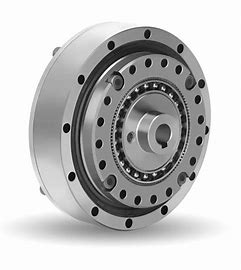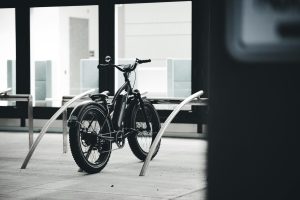What is an e-bike motor?
An ebike motor is the heart of an electric bicycle, converting electrical energy into mechanical power to assist riders during pedaling. Unlike traditional bicycles, e-bikes use motors to reduce physical effort, making cycling accessible to a broader range of users. These motors are typically powered by rechargeable batteries and controlled via a handlebar-mounted display or app.
Key Components of an EBike Motor
- Motor Unit: The core component that generates torque.
- Controller: Regulates power flow from the battery to the motor based on pedaling input.
- Sensors: Measure pedaling force, cadence, and sometimes terrain to adjust assistance levels.
- Battery: Stores energy to power the motor.
How Does an EBike Motor Work?
When you pedal, sensors detect your effort and send signals to the controller. The controller then directs the motor to assist proportionally to your input. Most motors cut off assistance once the bike reaches a certain speed (e.g., 20 mph in the U.S. or 25 km/h in Europe) to comply with regulations.
Types of EBike Motors
1. Mid-Drive Motors
- Position: Mounted near the bike’s bottom bracket (pedal crank).
- Advantages:
- Better weight distribution for improved balance and handling.
- Efficient power transfer, ideal for climbing hills or rough terrain.
- Works seamlessly with gear systems, reducing wear on drivetrain components.
- Disadvantages:
- Higher cost compared to hub motors.
- More complex installation.
- Popular Models:
- Bosch Performance Line CX Gen 5: 85 Nm torque, quieter operation, and advanced sensors for terrain detection.
- Shimano EP801: High-torque motor designed for eMTB with precise power delivery.
- DJI Avinox M1: Lightweight (2.52 kg) with 120 Nm torque, winning “Best in Test” for 2025.
2. Hub Motors
- Position: Integrated into the front or rear wheel hub.
- Advantages:
- Simple design, easy to install, and cost-effective.
- Rear hub motors provide better traction for acceleration.
- Front hub motors are lightweight and suitable for commuting.
- Disadvantages:
- Less efficient on steep terrain due to uneven weight distribution.
- Limited compatibility with certain gear systems.
- Popular Models:
- Bafang Ultra: High-power hub motor (1,000W+) for off-road use.
- Ananda Hub Motors: Affordable options with reliable performance.
3. Belt-Drive Motors
- Position: Combined with a belt drivetrain instead of a chain.
- Advantages:
- Quiet operation and reduced maintenance.
- Durable and resistant to dirt and moisture.
- Disadvantages:
- Higher cost and limited torque compared to chain-driven systems.
- Example: Enviolo CVP System: Integrates a continuously variable transmission for smooth gear changes.
Key Features to Consider
1. Power and Torque
- Power: Measured in watts (W), with most ebikes capped at 250W in Europe and 750W in the U.S. (Class 3). Higher power motors (e.g., 1,000W) are used in cargo or off-road bikes.
- Torque: Measured in Newton-meters (Nm), determines climbing ability. For example:
- DJI Avinox M1: 120 Nm for aggressive terrain.
- Optibike PowerStorm: 190 Nm for extreme off-road performance.
2. Weight and Efficiency
- Mid-drive motors: Typically weigh 2.5–3 kg (e.g., Bosch CX Gen 5: 2.7 kg).
- Hub motors: Lighter (1–2 kg) but less efficient on hills.
- Efficiency: Motors with higher energy density (e.g., Mahle X20: 1.4 kg, 55 Nm) offer better range.
3. Integration and Smart Features
- Apps and Displays: Many motors (e.g., Bosch, DJI) connect to apps for ride tracking, battery management, and customization.
- Regenerative Braking: Some motors (e.g., Shimano) recover energy during braking to extend battery life.
- Smart Sensors: Detect terrain, rider input, and adjust assistance in real-time (e.g., Bosch’s Hill Start Assist).
Top EBike Motor Brands
- Strengths: Reliability, advanced software, and a wide range of motors for all terrains.
- Models: Performance Line CX Gen 5 (eMTB), Cargo Line (货运).
- Shimano
- Strengths: Seamless integration with cycling components, high torque for mountain biking.
- Models: EP801 (eMTB), EP6 (urban) .
- DJI
- Strengths: Lightweight design, cutting-edge technology, and smart features.
- Model: Avinox M1 (2.52 kg, 120 Nm) .
- Bafang
- Strengths: Affordable, high-power motors for DIY conversions.
- Models: Ultra (1,000W), M600 (mid-drive) .
- Yamaha
- Strengths: Smooth power delivery, durable for long rides.
- Model: PW-X3 (85 Nm, 2.6 kg) .
How to Choose the Right E-Bike Motor
- Riding Style:
- Urban Commuting: Hub motors or mid-drive motors with eco modes.
- Mountain Biking: High-torque mid-drive motors (e.g., Bosch CX Gen 5, Shimano EP801).
- Cargo or Heavy Loads: High-power motors (e.g., Bosch Cargo Line, Optibike PowerStorm).
- Terrain:
- Hilly Areas: Mid-drive motors with 80+ Nm torque.
- Flat Terrain: Hub motors or lightweight mid-drive options.
- Budget:
- Entry-Level: Hub motors ($500–$1,500).
- Mid-Range: Mid-drive motors ($2,000–$4,000).
- Premium: High-performance motors (e.g., DJI Avinox, Bosch CX Gen 5) from $5,000+.
- Regulations:
- Check local laws (e.g., California’s 750W limit, EU’s 250W rule) .
Future Trends in EBike Motors
- Lightweight Design: Motors like Mahle X20 (1.4 kg) and DJI Avinox (2.52 kg) push boundaries.
- Smart Integration: AI-driven systems (e.g., Bosch’s Auto Mode) adapt to terrain and rider behavior.
- Sustainability: Recycled materials and energy-efficient production (e.g., Bosch’s new batteries).
- Integration with Drivetrain: Systems like 洛梵狄 iGearbox combine motors with automatic transmissions for seamless shifting.
Conclusion
An e-bike motor is a critical investment that determines your riding experience. Whether commuting, hitting trails, or carrying cargo, choosing the right motor, based on power, torque, weight, and compatibility, ensures optimal performance. With advancements in technology, motors are becoming smarter, lighter, and more efficient, making e-bikes a sustainable and enjoyable mode of transportation for everyone.




